Guide to Spanish Fruit
Once the summer fades in Spain, Autumn arrives and brings a bumper crop of Spanish fruit. Seems like when you have fruit trees it seems that the whole crop comes at once. In September and October quince, avocadoes and pomegranates are plentiful. Other lesser known fruits are in season too such as Loquats, caquis and jujubes.
Over the years I have learnt what to do with the surplus fruit in Granada province. Gathering some good recipes along the way.
In this quick guide I outline Seasonal Spanish Fruit,
Including Tips on how to prepare it and what nutritional properties each one has.
What´s a Chirimoya?
Spanish name: Chirimoya or Cherimoya
English name: Custard Apple (Annona cherimola)
Appearance: It´s a large green tropical fruit. Inside it has white flesh and lots of shiny black seeds. It´s delicate and bruises easily and is in season in Autumn & Winter. Chirimoyas grow on the Costa Tropical and in Granada. They produce 50 million kilos every year.
How to eat it: Slice in half and eat with a spoon, avoiding the large black seeds. When overripe they are not so good. Great for smoothies. Locally there is a craft beer made with Chirimoya as an ingredient, brewed by Cervezas Nazari.
Good for: Chirimoya have 75% water content and contain vitamin A & C. They also have potassium and antioxidants too. Recommended for constipation, to reduce stress and are said to be good for skin, teeth and bones too.
Some say that the properties of the Chirimoya act in a smiliar way to aspirin.
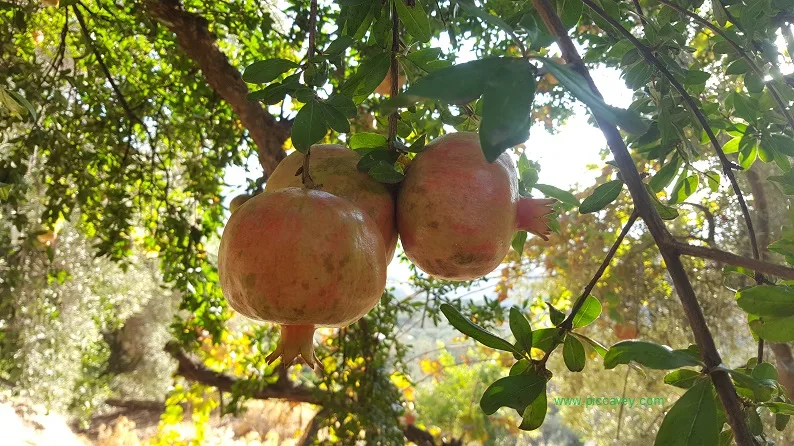
Marcona Almonds
Grown across many Spanish regions, Almonds are so popular in Spain. Served with Ham, cheese and wine, in all the christmas treats such as turron and marzipan… The trees are absolutely stunning when in flower in early springtime. Thousands of pink and white delicate blooms. I have particulared noticed them in Granada and Almeria province.
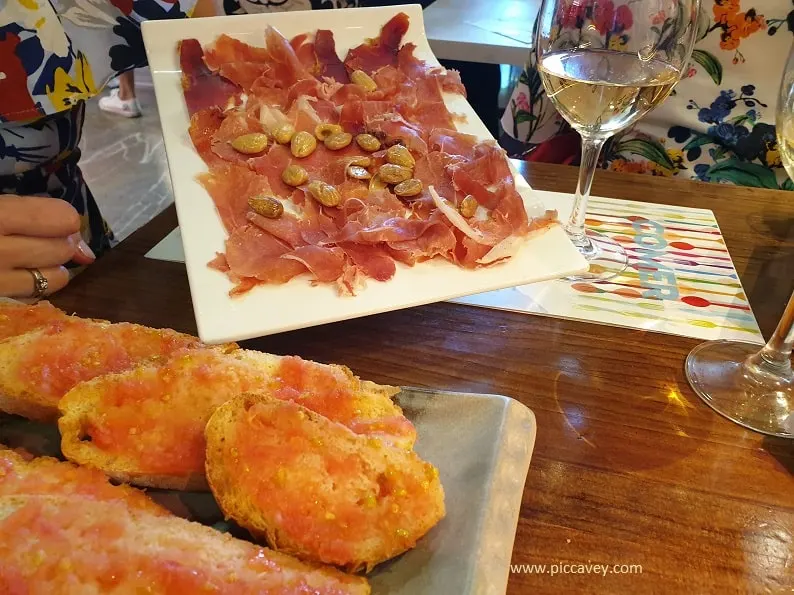
Almonds in other countries are increasing in popularity amongst consumers due to their heart and brain health properties. Also their versatility is a huge factor and you can use them in many ways. The highest quality variety are from Spain, known as Marcona almonds. They are highly prized, their flavour is superior and more aromatic than other varieties. The Marcona variety is harvested in each autumn across Spain.
Almonds are known to reduce bad cholesterol and increase good cholesterol. They are a great snack for vegan, vegetarians and meat eaters alike. Specialist companies such as deliart foods have recipes to help incorporate almonds into dishes or use for snacks on different occasions. You can get them natural (white) or in different formats such as salted, fried or caramelized (garripiñadas).
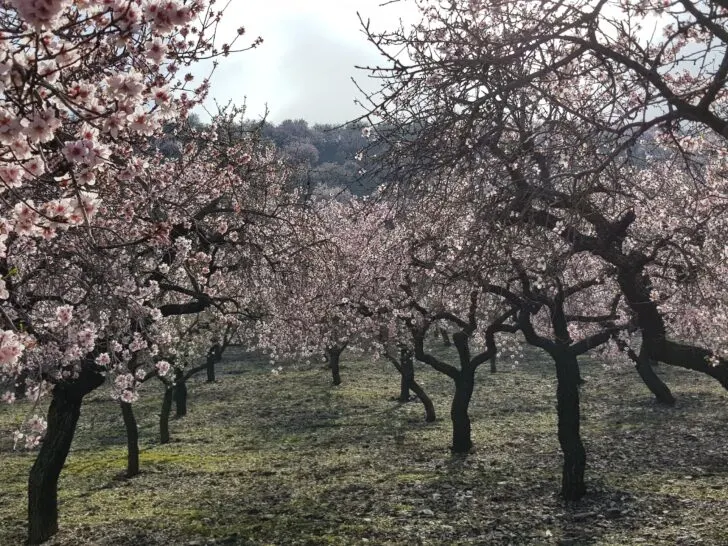
How to eat a Pomegranate
Spanish name: Granada
English name: Pomegranate (Punica granatum)
Appearance: This is a large orange or red fruit with a thick skin. Full of bright red seeds inside it´s in season from October to February.
Pomegranates are grown locally, in and around Granada province. This Spanish fruit is very typical in Autumn especially
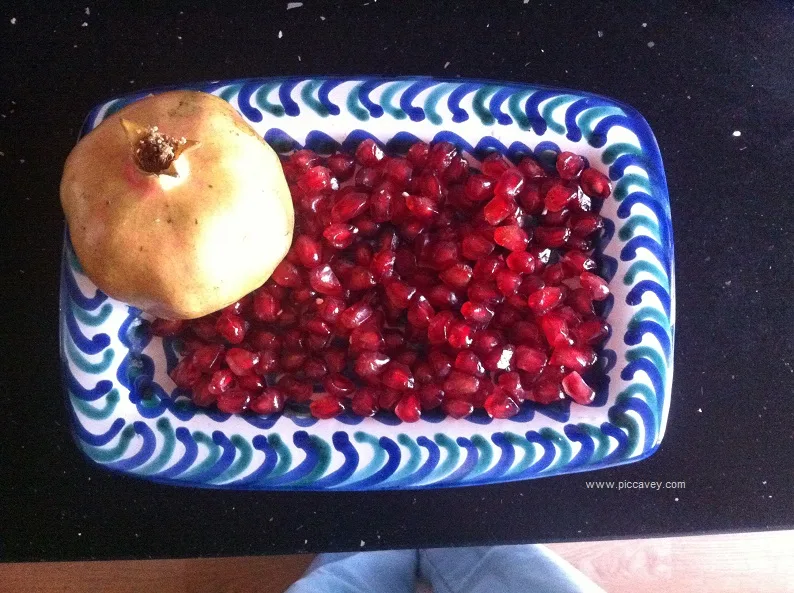
How to eat: Slice off the top and bottom then break it into 2 halves. Scoop out the seeds and eat them. (See video below) Careful with the red juice, as the stains are really difficult to get out. Eat the seeds alone or make juice from them. Also you can add them into yoghurt or top a salad with them.
Although in Spain its not as common in other parts of the world such as Israel fresh pomegranate juice is sold on street stalls. The variety of pomegranate is slightly different, darker in colour and more juicy. In Spain they are lighter in colour and more firm seeds.
Recipe: Here a great salad idea with pomegranate: Chickpea and Orange Salad recipe
Good for: They could help to avoid plaque building up on teeth and may even help to reduce blood pressure. Pomegranates are packed with antioxidants and high in fibre too.
The name of the city of Granada means pomegranate. You will see this symbol all around the city.
Caqui fruit
Spanish name: Sharoni and caqui (Diospyros kaki)
English name: Persimmon or Sharon Fruit (Varieties: Hachiyas and Fuyus)
Appearance: Caquis can be pale yellowey orange to deep red color. They look like tomatoes.
In Spain they are in season in Autumn.

How to eat: With a very ripe Caqui fruit (Hachiya) just lift skin and eat with a spoon. The pulp is almost liquid, like jam and has a very sweet taste. Unriped sharon fruit (Fuyu) can be ripened by storing in a container with alchol, such as aniseed liquor. When ripened they can be eaten sliced. (Do not eat on an empty stomach due to possible reaction with gastric juices.)
The astrigent nature of unripe Sharon fruit is quite unpleasant so it best to try these fruits when ripe.
Good for: High in fibre and rich in vitamin C.
Caquis may improve metabolism and the body to cope with fat storage. Personally I recommend eating the deep red caqui fruits, They have a wonderful colour and flavour. Be careful not to stain your clothing as it´s very difficult to remove.
Recipe: Persimmon Sorbet
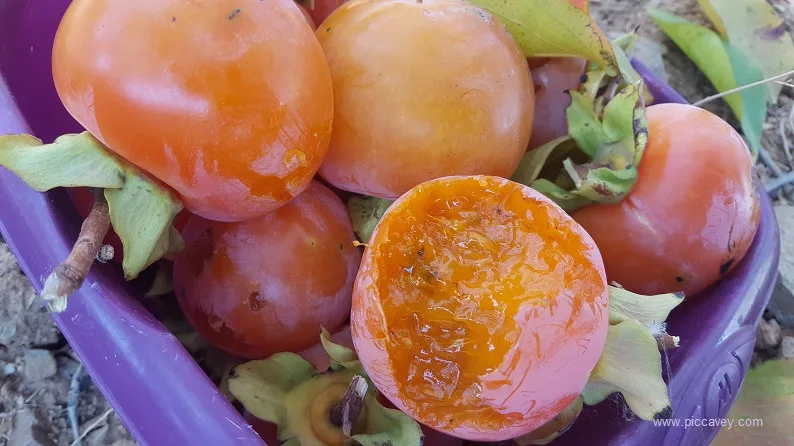
Loquat
Nisperos are very common around Granada province and in Andalucia. Called Loquat in English these small peach coloured fruits are a little fussy to prepare but have a delicate taste. Popular in China and from the Rosa family of plants. They have large smooth stones on the inside.
Loquats are low in calories but packed with vitamins and other nutrients like magnesium, potassium, and manganese.
Quince
Name in Spanish: Membrillo
Known in English as: Quince
Appearance: Looks like an Apple but slightly larger. They are in season in Autumn
How to eat: Great to make jams and jellies as they are high in pectin. They can be used with apples in crumbles and baking to enhance the flavour. Quince can be roasted in the oven or boiled with cinnamon for a winter dessert.
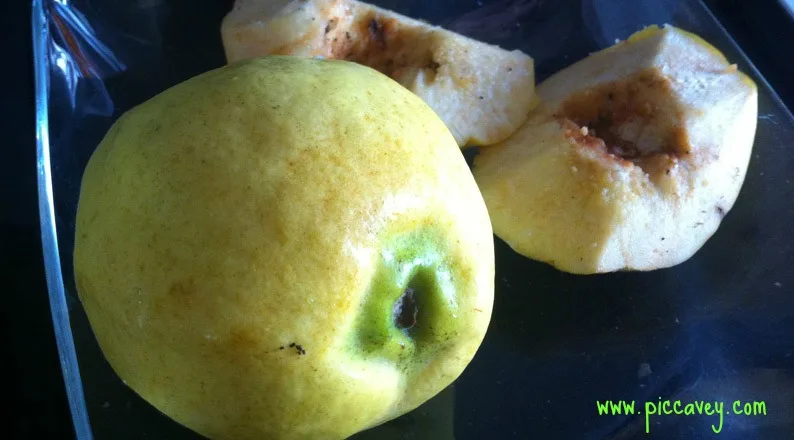
They also have a pleasant perfume that fragrances your home. They are grown locally in Granada province and other areas of Andalusia.
Good for: High in fibre and antioxidants, supposed to help weight loss too
Recipe: Quince Jelly with Cheese

How to eat a Prickly Pear
Spanish: Higo Chumbo
Known in English as: Prickly Pear
Appearance: Green, orange or yellow fruits with small seeds. In season in summertime
How to eat: See how to prepare them in the video below. Once peeled eat cold from the fridge or use in smoothies. The cactus plant that bears these fruits has lots of fine needles. Also found on the fruit, they are fine and invisible. You must wear thick gloves to pick them and use metal tongs to pull them off the plant to avoid getting these painful cactus spikes in your hands. Once they are peeled the fruit inside of course is spike free.
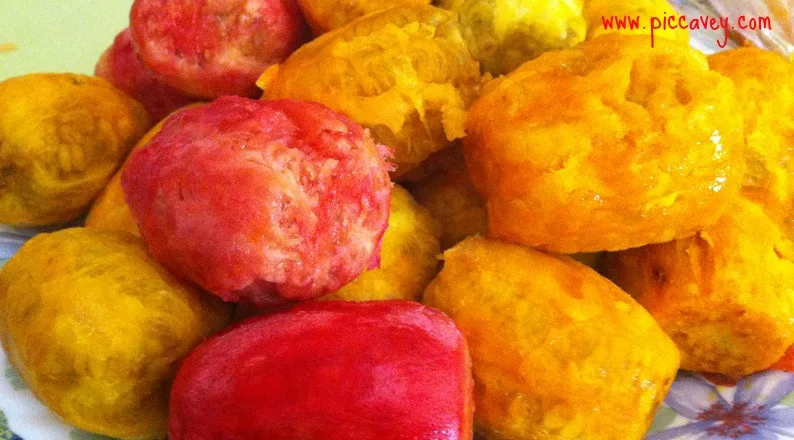
You may see street sellers with Chumbo stalls in September and October. They have done all the hard work removing the spikes.
Good for: They contain magnesium and potassium.
The fruit has lots of fibre and antioxidants. Prickly pears may help to lower cholesterol
What is a Medlar fruit?
Spanish: Nispero de invierno
Known in English as: Common Medlar
Appearance: Small Brown fruit with long sepals, soft pulp inside, similar taste to apple puree.
How to eat: Chop off the top and eat the rest. These remind me of crab apples and are in season in wintertime. When it is picked from the tree if must be eaten within one or two days. It doesnt last long.
Good for: Rich in Pectin and Vitamin B & C, years ago it was a home remedy to help combat diarrhoea in children.
What is a Jujube?
Spanish: Azoifaifa
Known in English as: Jujube or Chinese date
Appearance: This reddish Brown Berry looks like an acorn. It tastes similar to an apple and is in season in Autumn
How to eat: Eat alone but be careful with the stone in the centre. Although only a short shelf life, once picked only last 4-5 days.
Good for: They are small but have lots of Vitamin C. Supposedly they can ease the stomach and help to suppress appetite
Avocadoes
Spanish: Aguacate
Known in English as: Avocado
Appearance: An oval shaped fruit with green shiny skin. The flesh on the inside is pale green and has a butter like consistency when ripe. In season from November to January. In Granada province on the Costa Tropical 20 million kilos of avocados are produced each year.
How to eat: Apart from making guacamole avocadoes are also lovely in salads. Spreading avocado on toast is also a great way to liven up breakfast.
Good for: They have more potassium (per gram) than bananas and are rich in Vitamins B, E & K. They could help to reduce cholesterol levels in the blood
Recipe: Choose a ripe avocado and slice it in half. The stone should come out easily. Fill the hole with balsamic vinegar and salt. Eat with spoon.
Oranges and Lemons
Traditional Spanish Fruit
Oranges and lemons are plentiful around the South of Spain. Probably the Spanish fruit most associated with Spain, these citrus fruits have a very long shelf life and store well.
When they are in season (Winter and Spring) I use them for eating and for a daily juice every morning. Perhaps you have surplus oranges which you can make marmalade with.
Recipe: I also make a herbal infusion from the flowers on the orange tree see the method here: A calming natural tea
Street oranges: In Seville, Granada and other Andalusian cities you will see Orange trees lining city streets. Although these oranges are eye catching they cannot be eaten straight from the tree. This variety of oranges are bitter sweet and decorative. Also you may see a lot of them, these colourful fruits are just for show. In Seville they have been used traditionally to make marmalade.
Other Orange varieties are grown specifically for table oranges or for juicing. Then you have lots of other smaller varieties such as clementines ormandarins, which again are other plants. Don´t be tempted to eat these street oranges as the taste is quite bitter and the fruit is not juicy either.
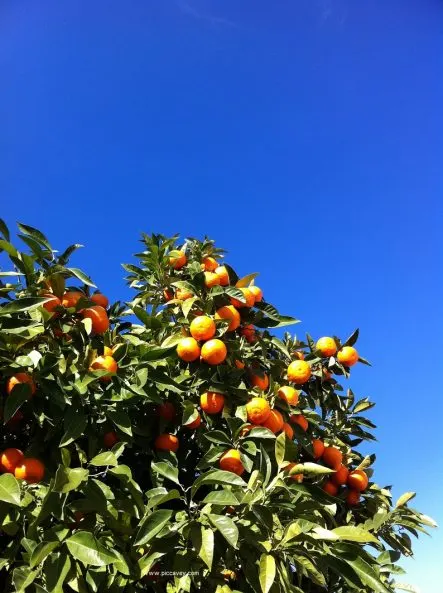
Seasonal Spanish Fruit
Of all of the fruits I get straight from the campo I don´t seem to have a favourite. Each one of them goes with that time of year. There´s nothing better than a cold chumbo on a hot august day. The sheer joy is having a different fruit each season and revel in the variety of them all.
You may also like to read The Story of Olives & Olive Oil
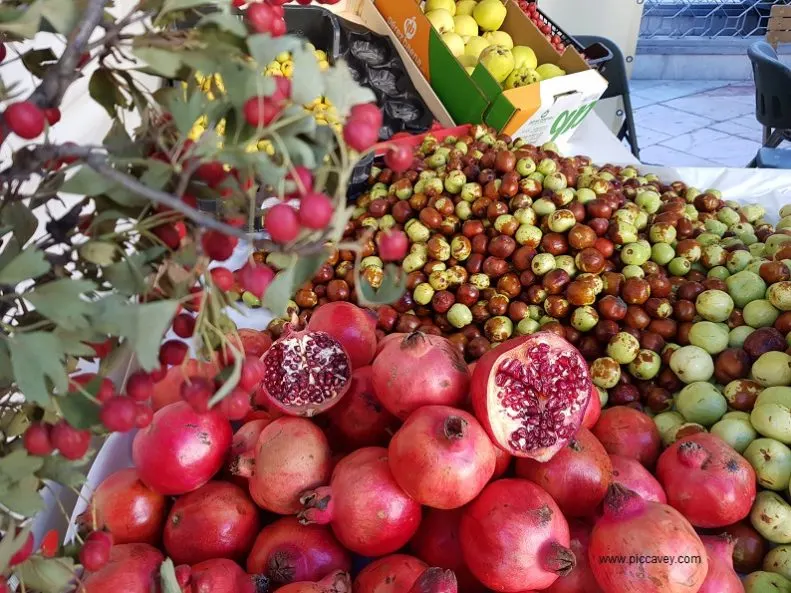
A Spanish Fruit Guide
Do you have lots of surplus fruit from your garden or trees?
Let me know your Spanish Fruit tricks and seasonal recipes too.

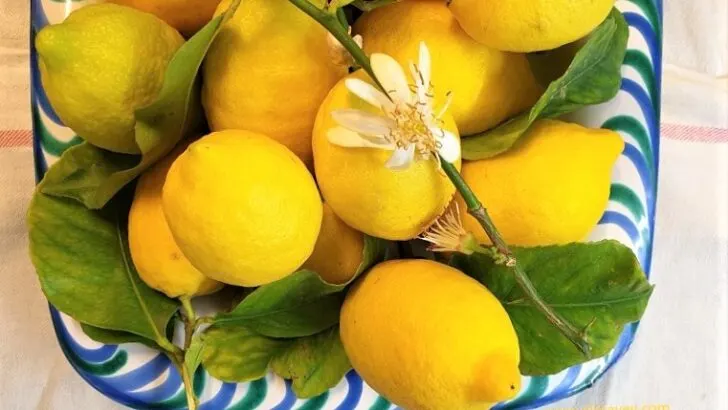
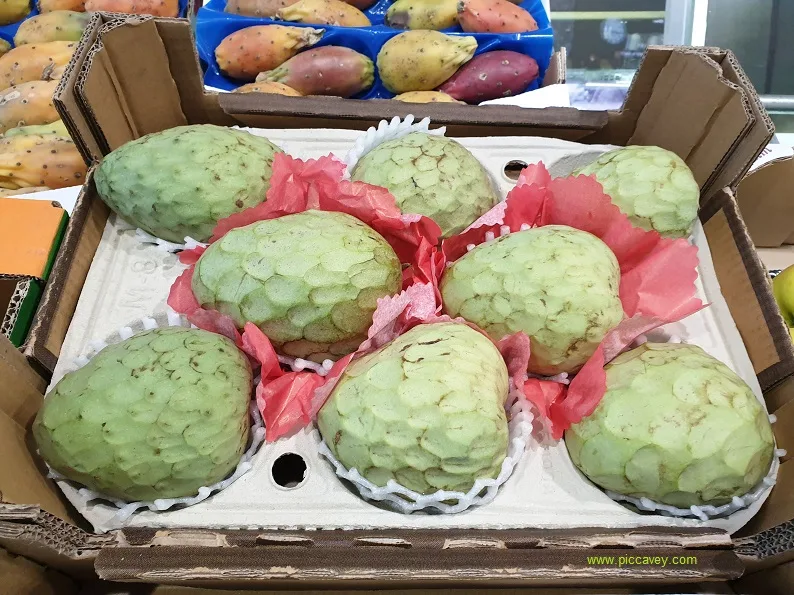
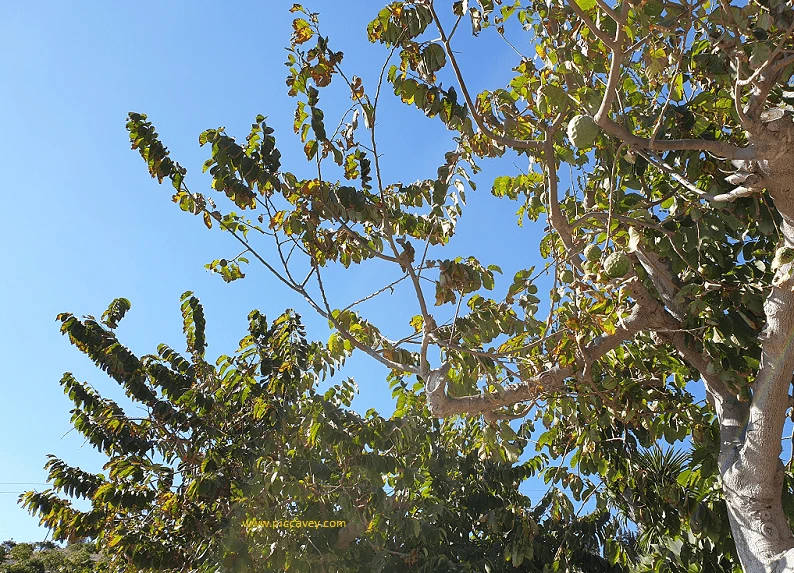
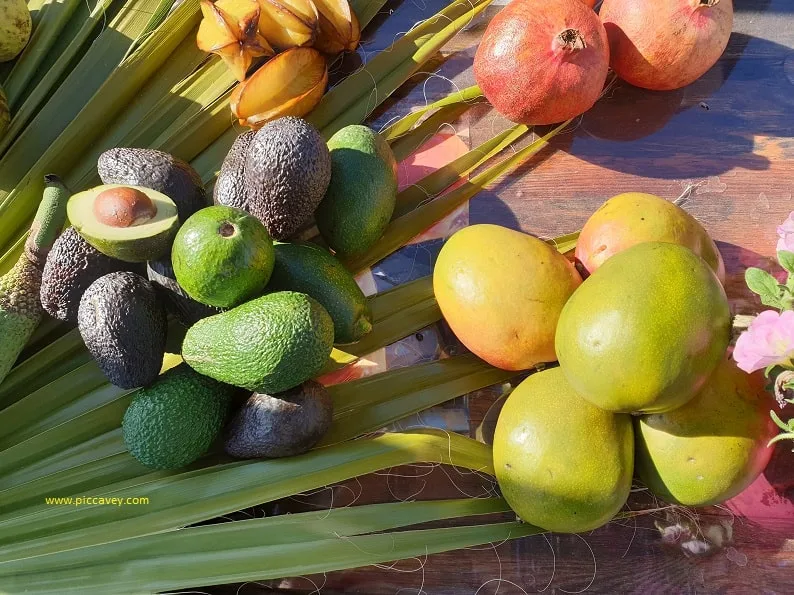
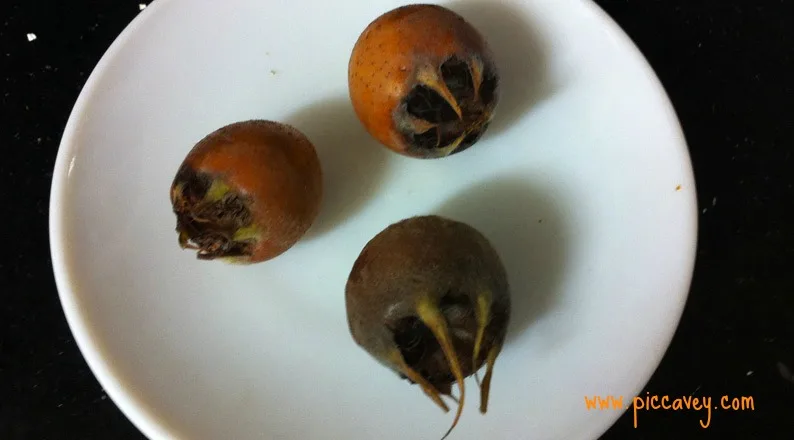
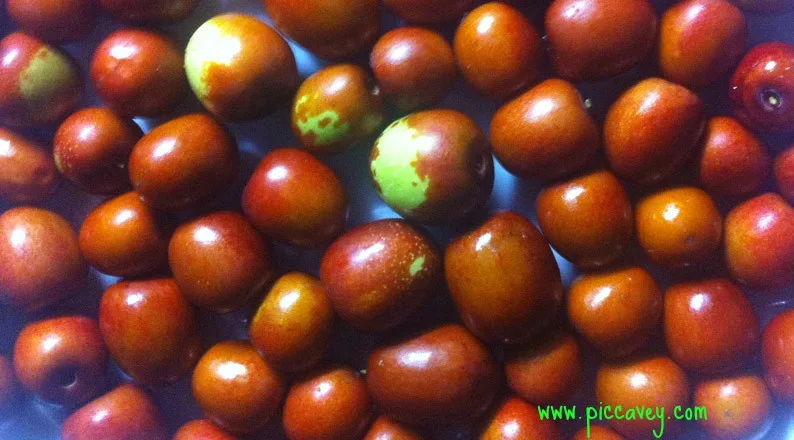
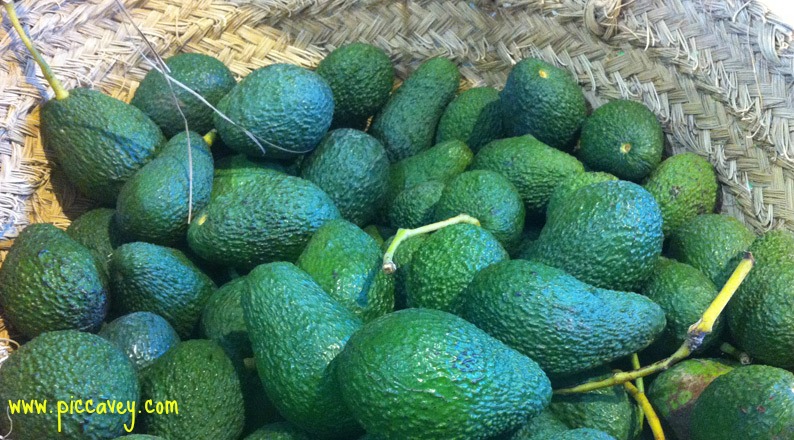




Hi, among the fruits you show in your lovely pictures but don’t include in your list are mangoes. It may be interesting to know that Spain (especially Malaga) is now Europe’s biggest exporter of mangoes that are renowned for their taste.
Yes, on the Costa Tropical in Granada province and some parts of Malaga province Mangoes are grown as well as Papayas.
As you can see in the picture above Mangoes appear on the post.
I wanted to focus on the fruits that some people know less how to use them such as Quince, Loquats or Prickly Pears.
thank you piccavey for giving me wonderful information
I use a Mexican method with prickly pears. take a large leaf, or more likely to hand some thin cardboard or an empty sardine tin box, pick up the fruit with it, and using a knife postion so that just one end sticks out. Cut off that end, and squeeze into the other palm or a bowl/plate. Eat.
I also did a youtube video of this some years back, but it’s a palava to search for it now.
Thats a good tip, thanks for sharing with us!
Why is Spanish flour so different to English flour?
I use Sainsburys its the best you can get in England
Bread, Plain & S.R
We do not like the dark chocolate which they use in Spain on cakes + drinks as its so dark and bitter.
But we love Spain its so different from England
Their way of life is so good for old age. Early rise, sleep in the afternoon, have supper when you feel like it.
It is just what the doctor ordered.
We love to be in Spain 6 months of the year and go back to our 2 bed house in England.
but all in all Spanish house a lot cheaper to run than English homes RATES are 3 times more in England and taxes you come to realise were your money goes when you go to another country.
the Spanish hospitals are so clean compared to ours in the UK
Thank you Spain for having me
Sandra
For baking in Spain, when I want to make an english recipe I use Self Raising Flour which I buy at Carrefour.
Ths Spanish flour is to be used along with Baking Powder to make cakes, or some also one called MAIZENA which is Cornflour.
The dark chocolate is actually better as it´s purer, but of course if you like Milk Chocolate and sweeter tasting cakes and biscuits the only way is make you own
Thanks for stopping by to read Sandra
Hi
We are hoping to travel to Barcelona during last week of October. Are there any fruit growing areas near Barcelona? We would like to visit one.
The agricultural areas are around Vic and Girona countryside.
I also found this article interesting http://www.barcelona-metropolitan.com/eating-and-drinking/wild-things/
Hi Molly!
I find your Spanish blog very resourceful! How do you rate visiting southern Spain in the months of November through February? We’re planning on a trip with three kids under the age of 11. Also, in terms of days needed to fully capture the main attractions and travel time between cities, how many weeks do you recommend?
Any insight would be appreciated!
Hello,
Thrilled that you have found my blog to be useful for your planning
If you could have an itinerary of 8-10 days that would be ideal.
The main cities with historic monuments and places with a large cultural offer would be Cadiz, Seville, Granada and Cordoba.
Perhaps arriving at Malaga stay over for one night then followed by transfer to Cadiz, 2 nights there, then 2 nights in Seville, 2 in Granada and 1 in Cordoba before returning.
If you have additional nights I would suggest adding an extra overnight in Malaga or Granada.
In Cadiz places to visit apart from the city itself are Puerto de Santa Maria, Jerez de la Frontera
and the beautiful coastline
In Seville the historic city can easily fill two days.
In Granada the Alhambra palace Albaicin and city centre can occupy two days. If you have longer the Alpujarra villages are a stunning day out. (hire car required)
Cordoba the historic city and Mosque of Cordoba require a full day with an overnight stay recommended.
The Medina Azahara site (short bus ride) is also highly recommended too.
The travel time between cities is low
Malaga to Cadiz 3 hours
Cadiz to Seville 90 mins
Seville to Granada 3 hours 30 mins aprox
Granada to Cordoba 2 hours 30
Cordoba to Malaga 1 hour 30 mins
Hope this helps with your planning
Molly
Great guide! I was wondering what some of these were and how to eat them. Here’s my preferred method of opening a pomegranate.
https://youtu.be/HGYpk395PUA
Thanks for sharing this
Its really useful
Thanks for this! Someone just arrived with a sackful of pomegranates (love em) and an unidentified fruit. From your description, I can say they are medlars. They are mushy and sweet. But, you don’t mention that they stink!
The nispero de invierno fruit are delicate, they are like apple puree inside.
So yes, if they get too ripe or squashed it can be messy.
Shelf life is very short.
Best to pick and eat in one day or two at the most
Love the pomegranate video! That is so much easier than the way I’ve been doing it. The Granada pomegranates have started making their way into the Valencia markets in the last few weeks, so I’m stocking up.
I love pomegranates too, so colourful in salads but I mostly eat them as a snack
Thanks for reading
Thank you for a very useful guide. I saw chirimoyas in the supermarket yesterday and didn’t have a clue what they were! Have also previously seen prickly pears but avoided them as I didn’t know what to do with them.
Thrilled that this guide does help. Chirimoyas are very sweet and I like them when the are less mature (squishy)
Prickly pears in the supermarket generally have the spines already taken off. But if you pick them yourselves be very careful.
Enjoy!
I truly love mangoes and previously my favourite mangoes were from the Philippines. However, I must state that the tastiest mangoes I have ever tasted were locally grown in or around Nerja on the Eastern Costa del Sol. Admittedly they are not the largest fruits in the world, but the taste is without equal anywhere else. Do not buy in a supermarket. In season, many local households offer mangoes grown in their nearby country cottages for sale in their doorway. This is the best place to buy good and tasty mangoes. I believe the peak season is around September and October. Do try a local mango from Nerja – it is the most delicious experience!
Are there more tropical fruit in Spain, like lychees, longans, sapotas, guavas, etc.?
Hi, On the Costa Tropical (south of Granada) Mangoes, Papayas, Bananas and Custard Apple, known as Chirimoya are grown. They could potentially grown other tropical fruit due to the climate but at the moment they don´t grow these fruits as far as I know.
The problem with medlars is that you have to get them almost to rotting state before you eat them – not visually appealing! And a favourite way for me with avocados is stuffed with a salsa type mix and cheesy sauce – delicious!
Thanks for the Avocado tip.
Yes medlars don´t look too pretty but the taste is good..
There’s such an interesting range of fruit in Spain. In our local supermarket we had nonis yesterday. I had to Google that one. Also interesting to see the slightly different spelling. Here on Tenerife the persimmon is simply ‘kaki’; no messing about with complicating the spelling 🙂
Great post. Didn’t know about higo chumbo. No wonder nobody has understood me as I have always used the word I learned in Argentina for it – TUNA!
Thanks for including a link to my recipes, Molly – I hope your readers find them useful!
If you have too much fruit all at the same time, Jam is the way to go Sue!